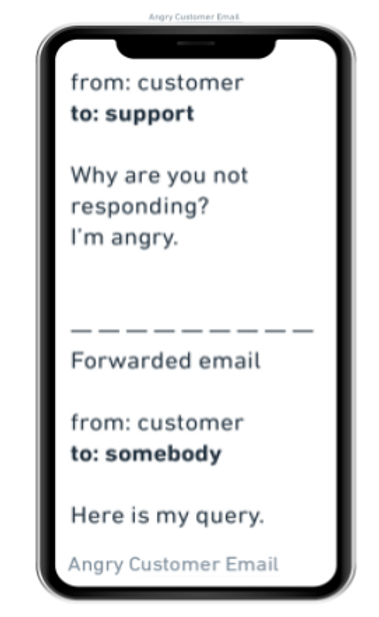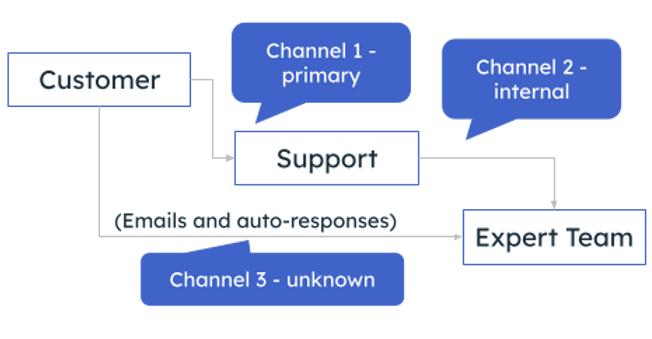Implementing Process Changes To Contribute To 40% Improvement In Customer Experience
Case Study: Changing Customer Support Process
You may have a well-researched product. You've interviewed stakeholders, conducted thorough testing, and feel confident that a new feature will solve customer problems. Yet, after launch, metrics stagnate, and complaints pour in about a poor experience.
This situation can unsettle you. Before assuming the feature is flawed and rushing into product changes, see how customers interact with your product. Often, minor adjustments to these processes can resolve the issue entirely.
In the first part of this series, we explored how product analysis, surveys, and interviews measure customer experience. Another article detailed metrics and signals for gaining leading indicators into customer satisfaction. This case study focuses on how process changes can significantly enhance customer experience, contributing to my team’s CX 40% improvement YoY.
I presented this case study at conferences a few years ago. See other presentations here.
I started writing this 3 years ago and completed it now. You need 3 minutes to read this.
I first published this on www.sparkcreativetechnologies.com on Nov 26, 2024.
Related:
Case Study - Why Were 10,000 Customers Angry?
At one point, we received 10,000s of emails from angry customers who believed the company was ignoring their complaints. This reaction surprised us because our customer query system seemed reliable.
We couldn’t find any bugs in our product either. We couldn’t find any bugs in the customer support software.
Then, why were customers angry? Why were we ignoring their complaints?
I investigated the issue and discovered a pattern. Customers were directly emailing the expert (escalation) team instead of contacting the support team. This is part of the video here.
The intended process was simple: customers would send queries to the support team, which handled most issues. If the support team couldn’t resolve a problem, they would escalate it to the expert team through an internal channel. This approach balanced workloads and ensured timely responses.
However, customers skipped the support team entirely and emailed the expert team directly. With only 2 members, the expert team became overwhelmed by the sheer volume of emails and couldn’t keep up. Their inbox turned into a black hole of unanswered messages, leaving customers increasingly frustrated. While the system itself worked as intended, the breakdown occurred because the process wasn’t followed.
We realized the channel 3 was externally open because our product sent monthly emails to customers from that email address.
Solution Via Process Change
My team and I had to adjust the processes.
We closed the unintended route to the expert team, leaving only the intended channel open. Customers now contacted the support team first. If the support team couldn't resolve the issue, they escalated it to the expert team. This reduced the number of emails reaching the expert team and made it easier for them to focus on complex issues.
This change improved both customer and team experiences.
Customers received faster responses,
while the expert team worked more efficiently.
The support team's vetting ensured that queries sent to the expert team were relevant and actionable.
Take Away
Your product may function flawlessly, but a flawed interaction process can still lead to poor customer experiences. In this case, the complaints were not about the product itself—it worked as intended. The issue arose because we did not provide a clear process and guardrails to customers.
Recommendation For CX Improvements To PMs And SMBs
Both large and small businesses should review how customers interact with their products. Small process changes often cost less than product overhauls but can deliver a significant impact.
Keep in mind that adding new features also changes customer interaction patterns. So, you need to update processes when rolling features.
How to Improve Product Interaction Processes
Here are some ways to refine product interaction processes:
Internal roadshows: Educate internal teams about new features and processes.
Beta support: Offer specialized support for beta products or features.
Dashboard reviews: Regularly monitor product metrics post-launch.
Escalation policies: Create clear paths for redirecting customer questions.
Improving customer experience goes beyond product features. Process changes can eliminate bottlenecks, ensuring smoother interactions. By optimizing how customers interact with your product, you can address frustrations effectively and enhance satisfaction.
I first published this on www.sparkcreativetechnologies.com on Nov 26, 2024.
Related:










